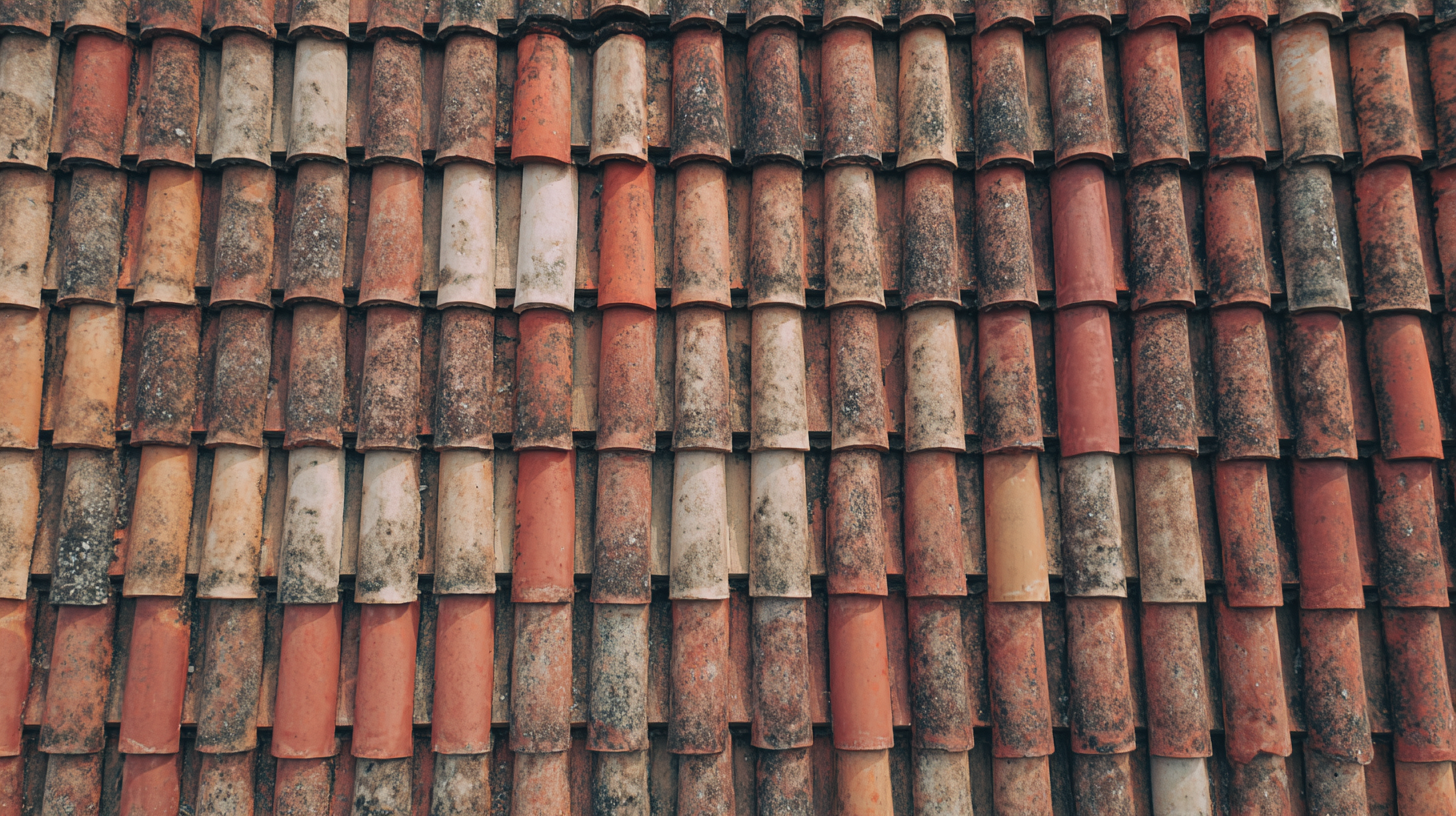
Leave Your Message
-
Phone
-
E-mail
-
Whatsapp

In the competitive landscape of construction materials, roof tiles have emerged as a crucial component, significantly influencing both the aesthetic appeal and structural integrity of buildings. According to a recent report by the National Roofing Contractors Association, approximately 65% of homeowners prioritize durability and energy efficiency when selecting roofing materials, with roof tiles offering superior performance in these areas. The global roof tile market is expected to reach USD 19.6 billion by 2025, driven by increasing demand for high-quality, environmentally sustainable building materials. As we explore the various benefits of the best roof tiles, it is essential to delve into industry insights and performance data that demonstrate their advantages, while addressing common problems associated with different types of roof tiles. Understanding these elements will equip homeowners and builders alike with the knowledge needed to make informed choices in roofing solutions.

When considering roof tiles, it’s essential to understand the diverse types available and their unique characteristics. Traditional clay and concrete tiles remain popular due to their durability and aesthetic appeal, often with lifespans exceeding 50 years. Recent industry insights reveal that advancements in material technology have led to the development of lightweight tiles, which not only reduce the overall burden on structures but also improve energy efficiency. This is particularly relevant as building codes increasingly emphasize sustainable practices and fire resistance in the face of climate change.
Moreover, the emergence of solar roof tiles has revolutionized the roofing industry by combining functionality with ecological benefits. Studies indicate that solar tiles can generate significant energy savings, with some systems yielding up to 25 percent more energy than traditional solar panels in the right conditions. However, performance can be influenced by environmental factors, such as bird droppings and soiling, which necessitate regular maintenance. As the industry continues to adapt to climate challenges, ongoing research into performance data will be crucial for optimizing the efficacy of various roofing options in diverse climates.
This chart illustrates the durability of various types of roof tiles, highlighting their longevity in years. Clay tiles are noted for their impressive lifespan, followed by slate, metal, concrete, and asphalt tiles, which tend to have shorter durability periods.
 When selecting quality roof tiles, several key performance metrics should be at the forefront of your decision-making process. Durability is paramount; tiles must withstand extreme weather conditions, such as heavy rainfall, strong winds, and intense sunlight. Look for materials like clay or concrete, which offer superior resistance to cracking and fading over time. Additionally, consider the tile's weight, as heavier options can provide better stability and longevity, ensuring your roof remains intact for years to come.
When selecting quality roof tiles, several key performance metrics should be at the forefront of your decision-making process. Durability is paramount; tiles must withstand extreme weather conditions, such as heavy rainfall, strong winds, and intense sunlight. Look for materials like clay or concrete, which offer superior resistance to cracking and fading over time. Additionally, consider the tile's weight, as heavier options can provide better stability and longevity, ensuring your roof remains intact for years to come.
Another crucial metric is thermal efficiency. Quality roof tiles should offer excellent insulation properties, helping to maintain comfortable indoor temperatures while reducing energy costs. Look for options with high thermal mass, which absorbs heat during the day and releases it at night. Furthermore, don't overlook aesthetic appeal; the right roof tile should not only perform well but also complement the architectural style of your home. By focusing on these performance metrics, you can make informed choices that enhance both the functionality and beauty of your roof.
The pursuit of sustainability in roof tile materials and manufacturing is more critical than ever as urban populations are projected to reach 68% by 2050. Recent studies have underscored the environmental benefits of eco-friendly building materials, such as roof tiles made from municipal solid waste, which not only elevate thermal comfort but also minimize landfill contributions. The lifecycle assessment of ceramic roof tiles highlights the environmental footprint associated with traditional clay extraction processes, showcasing the need for innovative methods in material production.
Incorporating advanced technologies such as solar roof tiles significantly contributes to sustainable building practices. These tiles endure various environmental factors while providing efficient energy generation. The adoption of carbon footprint assessments for different roof coverings, including concrete and clay tiles, reveals opportunities for optimization in manufacturing processes. For instance, metrics concerning embodied energy during production could guide manufacturers toward greener alternatives.
**Tip:** When selecting roof tiles, consider products that utilize recycled materials or renewable resources to enhance sustainability in your building project. Engaging with brands committed to reducing their carbon impact can lead to significant long-term benefits for both the environment and your energy costs. Another tip is to look for roof systems that include insulation or reflective materials to further enhance energy efficiency.
When considering roofing options, the cost-effectiveness of roof tiles stands out, particularly when evaluating their long-term financial benefits. Industry research indicates that while the initial cost of roof tiles may be higher than other materials, they often provide significant savings over time due to their durability and low maintenance requirements. According to a report by the National Roofing Contractors Association, roof tiles can last between 50 to 100 years, significantly outpacing alternatives like asphalt shingles, which typically require replacement every 15 to 20 years.

Furthermore, roofing tiles demonstrate superior energy efficiency. A study by the Cool Roof Rating Council reveals that tiled roofs can reflect more sunlight and absorb less heat, resulting in reduced energy costs by up to 20%. In regions with extreme weather conditions, the resistance of roof tiles to wind and hail can save homeowners from costly repairs and replacements, making them not just a durable choice, but a financially sound one in the long run. With these compelling statistics, it's clear that investing in quality roof tiles may yield considerable economic advantages, enhancing both property value and budget efficiency over time.
The roofing industry is witnessing exciting innovations and trends, particularly with the advent of advanced technologies. Expert insights indicate a significant shift towards sustainable materials, such as recycled plastic roof shingles, which not only reduce environmental impact but also present lucrative market opportunities. As the demand for eco-friendly solutions grows, manufacturers are exploring ways to enhance the performance and durability of these materials while maintaining aesthetic appeal.
In addition, technology is transforming how homeowners select roofing materials. The integration of augmented reality in tile selection processes is revolutionizing the consumer experience, enabling users to visualize their choices in real-time within their own spaces. This innovative approach not only streamlines the decision-making process but also helps ensure that the final selection meets both functional and design needs. As companies embrace these technological advancements, the roofing segment is poised for notable growth, driven by both consumer preferences and industry innovations.
| Roof Tile Type | Material | Durability (Years) | Energy Efficiency Rating | Weight (lbs/sq.ft) | Cost per Square (USD) |
|---|---|---|---|---|---|
| Clay Tile | Clay | 50+ | A | 6.5 | $900 |
| Concrete Tile | Concrete | 50 | A- | 8.0 | $750 |
| Slate Tile | Slate | 75+ | A+ | 10.0 | $1500 |
| Asphalt Shingle | Fiberglass/Asphalt | 20-30 | B | 2.5 | $300 |
| Metal Tile | Steel/Aluminum | 40-70 | A- | 3.0 | $850 |